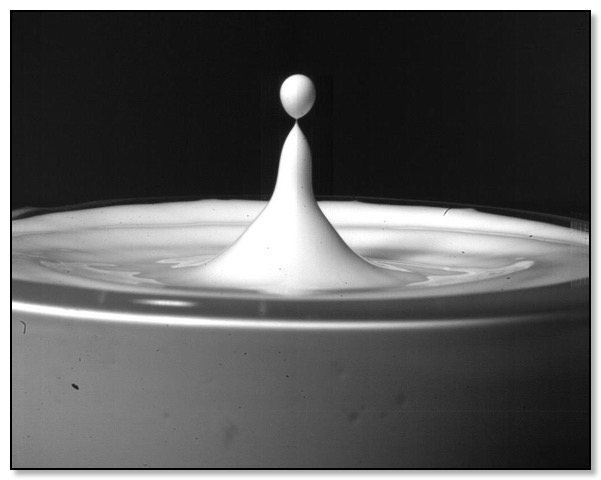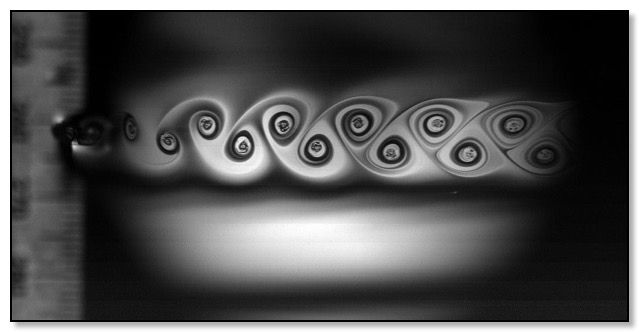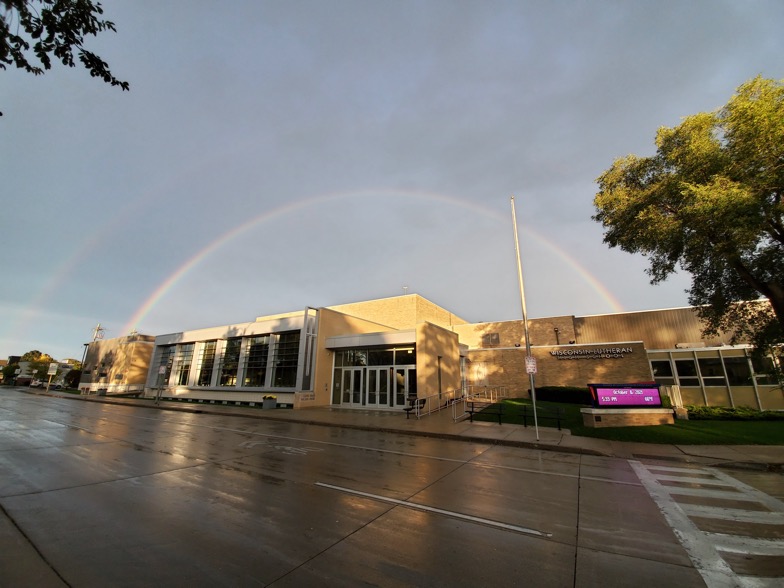Series 79, image 308: an image of water in a petri dish splashing upwards just after a droplet's impact. The water is made white by adding titanium dioxide. Photron fastcam-apx-rs; shutter speed 1/10,000 sec.

Image 0245: a suspended soap film illuminated with sodium lamp. This is the true color of the film, which arises from interference between the light waves reflecting from the front and back surfaces of the soap film.

Series 41, image 242. Karman vortex street appearing in a soap film as it moves past a cylindrical obstruction. The ticks on the ruler in the background are millimeters. Photron fastcam-apx-rs; shutter speed 1/8000 sec.

Image 0249: a suspended soap film illuminated with sodium lamp.

Series 61, image 26. Karman vortex street formed in a soap film flowing past an obstacle. Photron fastcam-apx-rs; shutter speed 1/5000 sec.

Series 70, image 932: karman vortex street formed in a soap film flowing past an obstacle. Photron fastcam-apx-rs; shutter speed 1/5000 sec.

The Solar Eclipse on August 21, 2017, which were taken at Magnolia Hollow Conservation Area, 10 miles north of Ste. Genevieve along the Mississippi River (GPS coordinates N38deg02.4sec, W90deg08.7sec). The weather was partly cloudy leading up to totality, but the weather cleared during totality and remained excellent until the end of the eclipse. Totality lasted 2 minutes and 39 seconds.

For the photo above, I used a Canon EOS Rebel T2i attached with a T-adapter to the back of a Celestron 8-inch Schmidt-Cassegrain telescope. I inserted a Celestron reducer/corrector lens between the telescope and the T-adapter to increase the field of view. I purchased an 8-inch piece of solar filter paper, which I framed with mat board. I used electrical tape to fix four small magnets around the rim of the telescope. I then fixed four similar magnets to the mat board framing the filter paper. This allowed me to quickly and easily snap the filter on to (and off of) the telescope during viewing. The following image used no filter.
On October 11, 2021, I took these photos of a (double) rainbow in the east just after an evening rainstorm. I used a cellphone camera.


Here is a photo of the lunar eclipse of November 19, 2021. Like with the solar eclipse photo above, I used a T-mount to attach a Canon camera to a Celestron 8" Schmidt-Cassegrain telescope.
